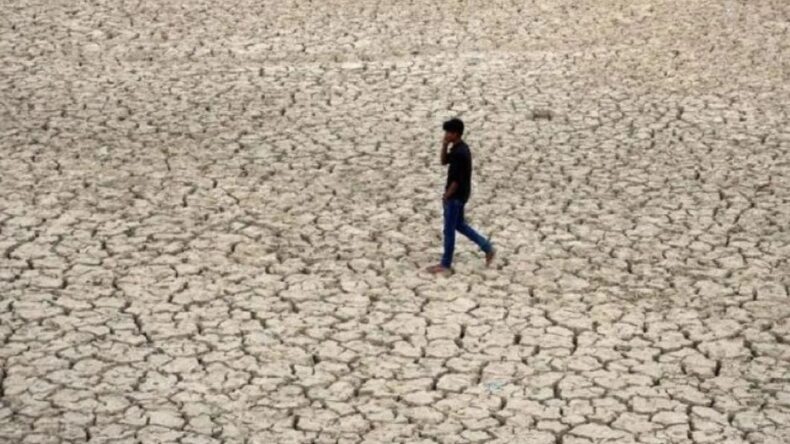The southern states of Karnataka, Kerala, and Tamil Nadu, typically blessed with the first monsoon rains, are grappling with an unprecedented challenge this year. Despite the usual heavy rainfall in July and August, these states have faced extended dry spells during the southwest monsoon season, putting their economies and agriculture at the brink of intense stress. As crops wither and water sources deplete, the agricultural output is at risk, potentially affecting industries and leading to water shortages and power cuts due to poor hydel generation.
Monsoon’s Unpredictable Behavior
Karnataka, Kerala, and Tamil Nadu, which usually experience bountiful rains during the southwest monsoon, are currently reeling under the impact of extended dry spells. The months of July and August are historically the rainiest in these southern states, but this year, their economies face severe distress due to prolonged periods of minimal rainfall. These states are witnessing the adverse consequences of a shifting monsoon pattern, resulting in water scarcity, crop failure, and potential economic turmoil.
Kerala and Karnataka: Worst-Hit Regions
Kerala, known for its lush landscapes and vibrant agriculture, is grappling with a cumulative rain deficit of 45% during the current monsoon season. All 14 districts of the state are facing drought-like conditions, with highland areas like Idukki and Wayanad, which typically receive heavy rainfall, also being adversely affected. Rice farmers in Kerala, whose indigenous crop varieties rely on monsoon rains, are facing uncertainty as both June and July, the first two monsoon months, remained dry. The delay in sowing with the hope of better prospects in August led to further disappointment, as the dry spell continued.
The implications of the drought extend to Kerala’s economic backbone. The state is a major producer of spices like pepper, cardamom, and ginger, as well as coffee and tea. However, the commercial crops are projected to suffer output shortages this year due to the rainfall deficit. Moreover, the scarcity of drinking water has reached critical levels in areas like Wayanad, exacerbating the crisis by severely affecting power generation due to plummeting water levels in dams.
Karnataka, on the other hand, is witnessing the harsh impact of the drought on its newly formed government. With 21 out of 31 districts facing drought-like conditions, agriculture is on the verge of a crisis. The state’s vulnerable financial situation is further strained as it grapples with a rainfall shortage exceeding -20% from June to late August. The region of Malnad, characterized by its heavy rainfall and proximity to the Western Ghats, faces an alarming cumulative deficit of -40% across four districts.
Compounded Challenges and Political Realities
Adding to Karnataka’s woes is the obligation to supply Tamil Nadu with its share of Cauvery water, despite the state’s own dams struggling to meet the demands of its farmers. The urgency of the situation is evident as the state enters the final days of August with only scattered mild rains across regions. Crucial crops like paddy, maize, jowar, millets, groundnut, and cotton are at risk of being entirely lost without immediate and consistent rainfall in the upcoming days and throughout September.
The drought’s impact spans across multiple regions, affecting as many as 120 taluks, each with varying levels of rainfall shortage, across Karnataka. This dire situation places immense pressure on the state’s finances, as the government faces the challenge of compensating for the significant crop losses or risking farmers’ discontent.
The political dimension adds complexity to the predicament. Historically, Karnataka’s appeals for drought assistance have yielded limited results, irrespective of the ruling party at the center. With a contrasting political party in power at the central level, the state’s prospects of receiving assistance remain uncertain and challenging, given the existing political rivalry.
Climate Change and the Way Forward
The current drought crisis underscores the far-reaching impacts of climate change on the southern states’ economies and ecosystems. The shifting monsoon patterns from excessive rains to prolonged dry spells are indicative of the climate’s unpredictability, necessitating proactive measures for adaptation and mitigation.
In conclusion, the unprecedented monsoon deficit plaguing Karnataka, Kerala, and Tamil Nadu demands urgent attention and collective action. Immediate measures are essential to alleviate the economic and agricultural distress, ensure adequate water supply, and prevent further power shortages. As climate change continues to challenge traditional weather patterns, comprehensive strategies and collaborative efforts are crucial for safeguarding the future of these vital regions and the livelihoods of their populations. In the face of these pressing challenges, it is imperative for the governments of Karnataka, Kerala, and Tamil Nadu to come together and develop a coordinated response plan. This includes prioritizing sustainable water management strategies, investing in drought-resistant agricultural practices, and strengthening disaster preparedness measures. Additionally, regional cooperation and engagement with scientific and environmental experts are essential to comprehensively address the implications of climate change and secure a more resilient future for these states. The current crisis serves as a wake-up call, urging all stakeholders to unite in their efforts to mitigate the adverse effects of shifting monsoon patterns and build a more climate-resilient southern India.













